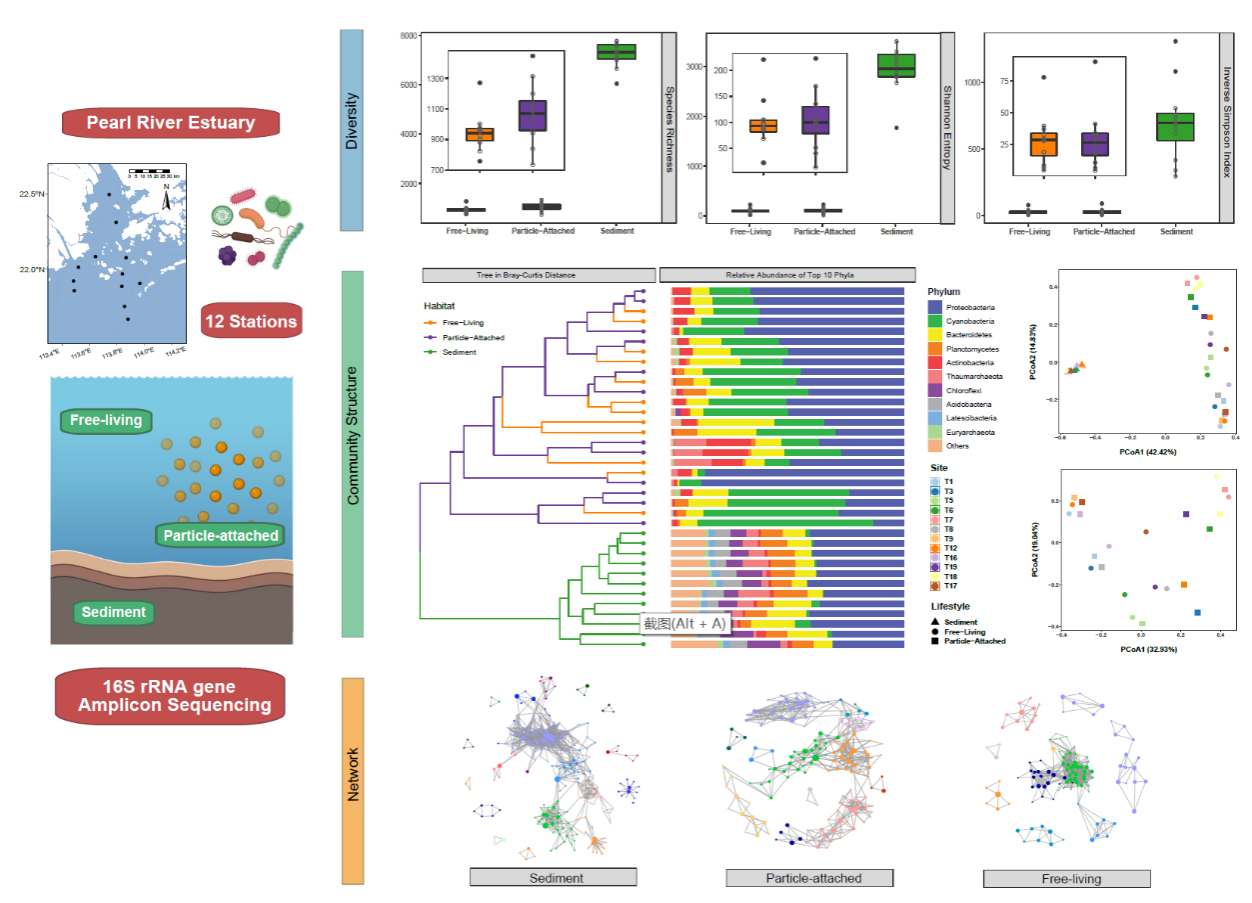Microbes are indispensable components for the key biological processes of estuarine ecosystems and three main habitats (sediment, particle, and water) are harboring diverse estuarine microbes that prefer distinct lifestyles, such as the free-living (FL) and particle-attached (PA) microbes in water column and the benthic microbes in the sediment. Differentiation in microbial lifestyles might signify their preferences in certain biochemical process and contrasting responses when facing same environmental stress. However, we still know little about how the microbial community structures, potential keystone species, and network properties change among these three habitats in estuarine ecosystems.
Prof. Wenjun Li's team of the School of Life Sciences at Sun Yat-sen University compared the diversities, community structures, microbial network properties and potential key taxa of the PA, FL, and sediment microbial communities in the Pearl River Estuary by utilizing 16S rRNA gene amplicon sequencing. Prof. Li's team found that sediment microbial community was remarkably more diverse than PA and FL communities, whereas its ecological network was less complex in terms of node distance and connectivity. TOC was determined as the main driver of sediment community, while the PA and FL communities were predominantly shaped by NO2-, non-ionic ammonia (NH3) and pH. Potential keystone taxa among community networks were taxonomically divergent in three habitats. Synechococcales (Cyanobacteria) and Actinomarinales (Actinobacteria) exclusively served as the module-hubs in the FL network, while members from phylum Proteobacteria and Bacteroidetes were the module-hubs and connectors in the PA network. Potential keystone taxa in the sediment network were more diverse and covered 9 phyla, including the only archaeal lineage Bathyarchaeia (Crenarchaeota).

Figure 1. The technical route of this research and the comparison of the diversity, community structure and network characteristics of three different habitats
This paper recently has been published in Environmental Research with the title of “Habitat-dependent prokaryotic microbial community, potential keystone species, and network complexity in a subtropical estuary”. Master's student Li Duan and postdoc Jialing Li are the first authors, and Prof. Wenjun Li and postdoc Pandeng Wang are the corresponding authors. This work was financially supported by Innovation Group Project of Southern Marine Science and Engineering Guangdong Laboratory (Zhuhai) and China Postdoctoral Science Foundation.
Link to the article: https://www.sciencedirect.com/science/article/pii/S0013935122007034
